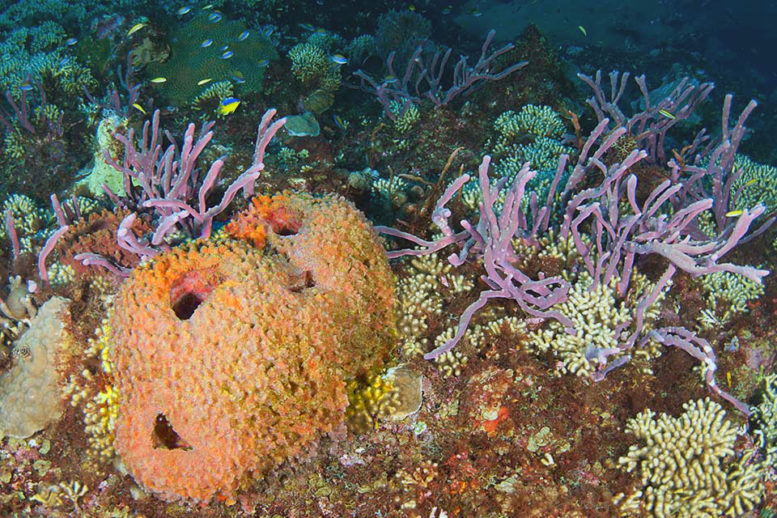Sponges — simple aquatic animals with dense, yet porous, skeletons — are highly adapted to their environments.
Sponges are found in a wide variety of colors, shapes, and sizes, and are often mistaken for plants. Scientists believe that their varied colorations may protect them from the sun’s harmful ultraviolet rays.
Sponges have been around for a very long time, with certain species having a fossil record that dates back approximately 600 million years to the earliest period of Earth’s history, Precambrian.
The approximately 8,550 living sponge species are scientifically classified in the phylum Porifera, which is comprised of 4 distinct classes: the Demospongiae (most diverse; 90% of all living sponges), Hexactinellida (rare glass sponges), Calcarea (calcareous sponges), and Homoscleromorpha (the rarest and simplest class, only recently recognized, with approximately 117 species).
While sponges, like corals, are immobile aquatic invertebrates, they are otherwise completely different organisms with distinct anatomy, feeding methods, and reproductive processes. The main differences are:
- Corals are complex, many-celled organisms. Sponges are very simple creatures with no tissues.
- All corals require saltwater to survive. While most sponges are found in the ocean, numerous species are also found in fresh water and estuaries.
Regardless of these differences, sponges are important inhabitants of coral reef ecosystems. A diverse sponge population can positively affect water quality on the reef as the sponges filter water, collect bacteria, and process carbon, nitrogen, and phosphorus. In nutrient-depleted coral reefs, some sponge species are thought to make carbon biologically available by excreting a form of “sponge poop” that other organisms feed on, thereby fueling productivity throughout the ecosystem. In this way, sponges protect the reef against extreme fluctuations in nutrient density, temperature, and light, benefiting the survival of other reef organisms.
A sponge’s skeletal type adapts well to its particular habitat, allowing it to live on hard, rocky surfaces or soft sediments such as sand and mud. Some sponges even attach themselves to floating debris! Rarely are they found completely free-floating.
As water filters through a sponge’s porous exterior, the sponge gains some motion, receives food and oxygen, and dispels waste. Inside the sponge, tiny hairlike structures called flagella create currents to filter bacteria out of the sponge’s cells and trap food within them. Their strong skeletal structures help sponges withstand the high volume of water that flows through them each day.
